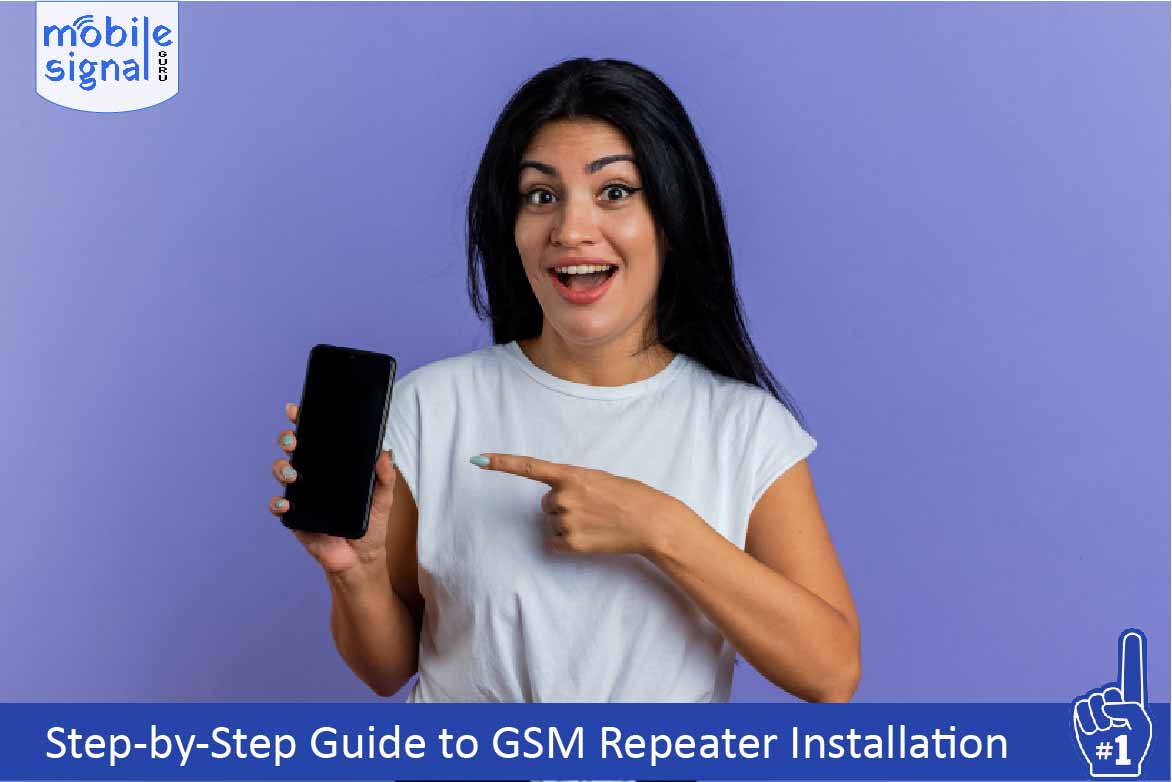A GSM repeater installation can significantly improve your mobile signal, especially in areas with weak reception. This guide will help you install a GSM repeater efficiently. Following these GSM Repeater Installation steps ensures the device functions optimally while adhering to best practices.
Step 1: Understand How a GSM Repeater Works
Before installation, it’s crucial to understand how a GSM repeater works. A GSM repeater enhances mobile signals by capturing weak signals using an outdoor antenna, amplifying them, and then rebroadcasting them indoors using an indoor antenna. This process ensures improved call quality and internet connectivity.
Key Components of a GSM Repeater System:
- Outdoor Antenna: Captures weak signals from the nearest cell tower.
- Indoor Antenna: Redistributes the amplified signal inside your home or office.
- Amplifier (Repeater): Enhances the strength of the signal.
Knowing how these components work will help you during the installation process.
Step 2: Check Mobile Signal Strength
Before setting up the repeater, check the current signal strength on your mobile phone. Signal strength is measured in decibel-milliwatts (dBm), and you can find this information in your phone’s settings. A signal strength between -50 dBm and -70 dBm is excellent, while anything below -100 dBm is weak.
This will help you identify how much signal boost you need and where the outdoor antenna should be placed for maximum effect.
Step 3: Choose the Right Location for the Outdoor Antenna
The placement of the outdoor antenna is critical for successful installation. Place the antenna in a location with the best possible mobile signal. Usually, rooftops or high areas with minimal obstructions work best. Once you identify the spot with the strongest signal, mount the outdoor antenna securely.
Tips:
- Make sure the outdoor antenna faces the nearest cell tower.
- Avoid placing the antenna near metallic objects or electrical lines, as these may interfere with the signal.
Step 4: Install the Outdoor Antenna
Once you’ve selected the optimal spot, mount the outdoor antenna. Follow the instructions provided by the manufacturer for securing the antenna in place.
Points to Consider:
- Ensure the antenna is mounted firmly to withstand weather conditions.
- Use a mounting pole if necessary for elevation.
- Keep the antenna at least 10 meters away from the indoor antenna to prevent interference.
Step 5: Connect the Outdoor Antenna to the Repeater
After mounting the outdoor antenna, connect it to the GSM repeater using a coaxial cable. Ensure the connection is tight and secure to prevent signal loss.
Pro Tip:
- Use high-quality coaxial cables to reduce signal attenuation.
Step 6: Position the Indoor Antenna
The indoor antenna should be placed in the area where you need the strongest mobile signal. Ideally, this location should be central to the space you want to cover. It’s important to keep the indoor antenna as far away from the outdoor antenna as possible to avoid signal feedback or interference.
Suggestions for Placement:
- Install the indoor antenna in a central part of the building.
- Avoid placing it near windows or other large reflective surfaces.
Step 7: Connect the Indoor Antenna to the Repeater
Using another coaxial cable, connect the indoor antenna to the repeater. Make sure all connections are secure. Loose connections can affect the performance of the system.
Step 8: Power On the Repeater
Once everything is connected, plug the repeater into a power outlet and switch it on. The intelligent LCD display will guide you through any necessary adjustments.
Step 9: Check for Installation Errors
Most modern GSM repeaters come with automatic alarms for incorrect installations. If the system detects an issue, it will alert you via the LCD screen. Common errors include:
- Improper antenna placement.
- Interference between the outdoor and indoor antennas.
Step 10: Test the System
After powering on the system and ensuring there are no errors, test the signal strength inside the building. Walk around the coverage area with your mobile phone to ensure the signal has improved. The repeater should provide a significant boost in signal strength, leading to clearer calls and faster data.
Step 11: Adjust System Gain (if needed)
If the signal is too strong or too weak, you can adjust the gain settings on the repeater. Many devices come with automatic gain control (AGC), which adjusts the signal strength automatically to avoid self-excitation. If necessary, make manual adjustments to fine-tune the system.
Step 12: Regular Maintenance
Regular maintenance ensures the GSM repeater works efficiently. Inspect the antennas periodically to ensure they’re securely mounted, and check the coaxial cables for wear and tear. Cleaning the repeater’s components and replacing worn cables can extend the device’s lifespan.
Final Checklist
- Properly mount both antennas.
- Ensure secure coaxial connections.
- Power on and check for errors.
- Test signal strength and adjust gain if necessary.
Conclusion
A GSM repeater installation is a straightforward process, and following this guide ensures optimal performance. By carefully placing the antennas, checking signal strength, and adjusting the system gain, you can significantly improve your mobile signal at home or in the office.
 Australia (AUD)
Australia (AUD) Denmark (DKK)
Denmark (DKK) France (EUR)
France (EUR) Germany (EUR)
Germany (EUR) Ireland (EUR)
Ireland (EUR) Malta (EUR)
Malta (EUR) Netherlands (EUR)
Netherlands (EUR) New Zealand (NZD)
New Zealand (NZD) Norway (NOK)
Norway (NOK) Spain (EUR)
Spain (EUR) Sweden (SEK)
Sweden (SEK) UAE (AED)
UAE (AED) United Kingdom (GBP)
United Kingdom (GBP)
